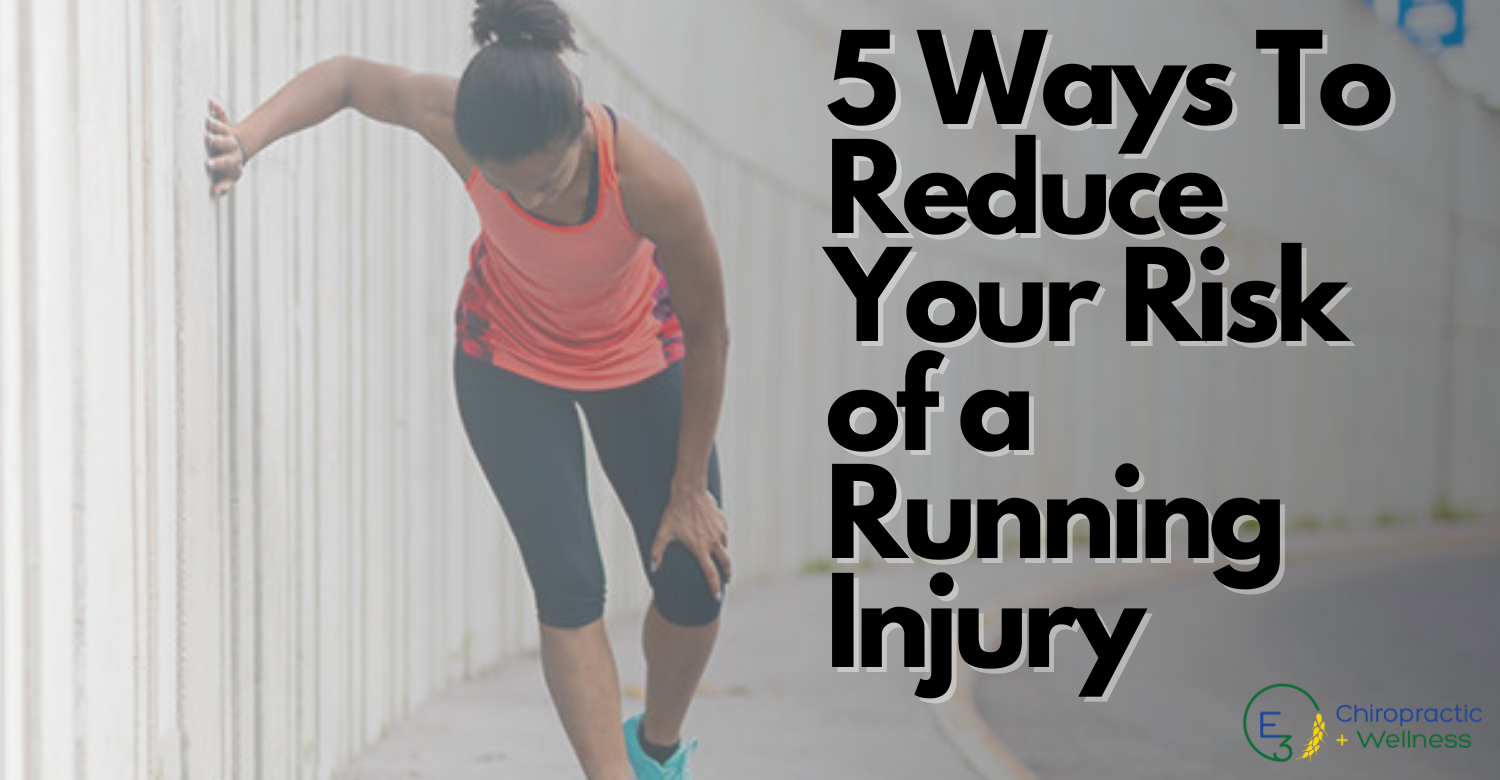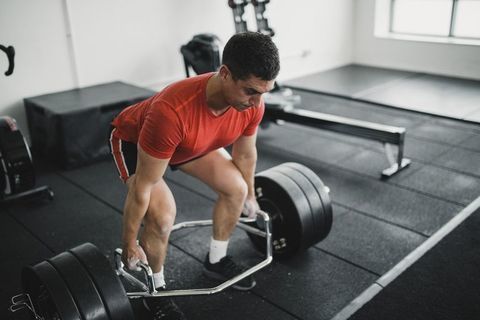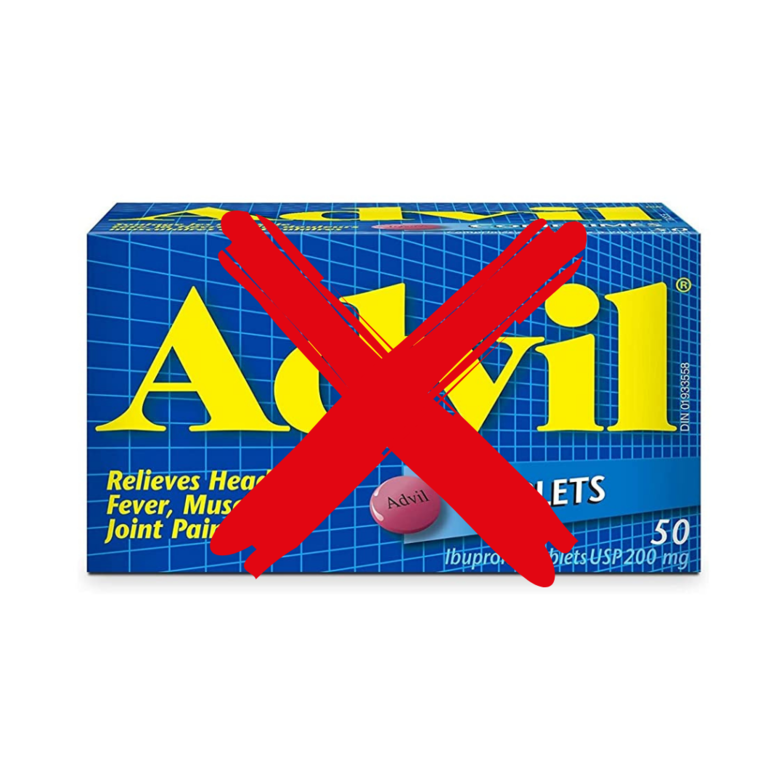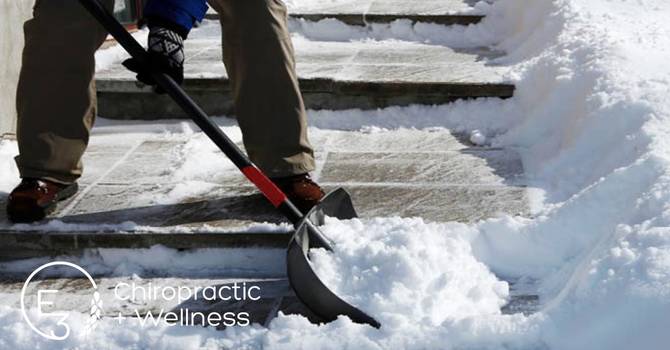
It is no secret that running is great for humans and comes with significant health benefits - but it also causes the most injuries in ANY sport.
Among nearly 12 million runners in the United States alone, the annual injury rate is close to 50%, resulting in almost 2 million stress fractures and numerous muscle and tendon injuries each year. Nearly 70% of injured runners will be re-injured within 12 months.
Running has the potential to be incredible for your physical, mental and emotional health! But how do you run without getting an injury or being in pain?
Here are five ways you can reduce your risk of a running injury this year!
5 Ways to Reduce Your Risk of a Running Injury
1. Ease Into Running By Using a Walk-To-Run Program
Running is a little bit more complicated than I believe most people give it credit. It involves nearly every muscle in your body working together to produce a motion that no other living species can perform as well as humans do (at least on two feet. Go away, cheetah’s).
Doing too much, too quickly, is an easy way to get a running injury.
Please don’t be mad at me, but we’re going to do some math.
Let’s assume a moderate cadence of 150 steps/minute and an average time for a 5km run of 30 minutes. During these 30 minutes, each foot takes 2,250 steps to complete the run. That means the muscles and tendons in your feet and legs are being loaded with intense plyometric forces 2,250 times during a 30-minute run.
Walk to Run Program
A walk-to-run program is a graduated exposure to increase your time spent running. A basic beginner program involves 10 minutes of walking followed by one minute of running. The math is a lot different. You are only applying intense plyometric forces to each foot 250 times.
As time progresses, you slowly increase your time spent running by about 5-10% each week.
If it has been a while since your last run, you have had a recent injury, or this running thing is all new to you, ease into it!
2. Avoid “Running Through The Pain.”
Running through the pain seems to be a mantra of many athletes, but for the most part, we can agree that pain is not a good thing! Pain occurs in the body when the body perceives potential damage or threat to the body's structures. THAT IS NOT GOOD!
Common Running Injuries Include:
- Foot/ankle pain
- Plantar Fasciitis
- Shin Splints
- Knee pain (runners knee)
- Hip pain or hip clicking
- Low back pain
If you are a runner experiencing pain, don’t let nagging pain turn into an injury that keeps you away from this great activity. Book an appointment today to have your pain or injuries assessed!
3. Strength Train
Yes, you read that right. Strength training is crucial for runners of all distances for these three reasons:

1. Making tendons and muscles resistant to injury
As we showed above, running puts A TON of force through the tendons and muscles of your lower body. The best and most efficient way to prevent those structures from becoming injured is by ensuring that they can handle that load without failing.
2. Ensuring all muscles are strong enough to perform proper gait
As I mentioned above, humans are the only species on the planet that can efficiently run on two feet. Running is a highly complex motion that requires the synergistic use of HUNDREDS of muscles. To ensure that gait is performed correctly, building and maintaining adequate muscle strength in the feet, lower leg, thigh and hip is critical!
3. Increasing stride length. (You guys are going to be mad at me again, we’re going to do more math.)
- By increasing the strength to weight ratio, each step while running would propel us further, increasing our stride length.
- A 26.2 mile marathon is 1,661,235.84 inches. The average stride length is 27.5 inches, which means it would take approximately 60,408 strides to complete this marathon.
- If you increase your stride length to 30 inches, you will cover 28.6 miles with the same number of strides, or you could complete a 26.2-mile marathon in 55,374 strides instead of 60,408.
To clarify, this does not mean that you are reaching with your lead leg with each stride. Because you are becoming stronger, when your foot contacts the ground, you generate more force, propelling you further forward with each stride.
“Regularly running long distances is stressful on the body and, to avoid injury, you have to be strong, coordinated and well informed” - Tom Michaud
4. Avoid Relying on Non-Steroidal Anti-Inflammatory Drugs
I won't spend too much time on this topic, but these are the three things you need to know.
- NSAIDs have shown to interfere with bone remodelling (it seems backwards to take a bunch of these with a stress fracture)
- NSAIDs may inhibit tendon repair following an injury (again, it seems kind of backwards)
- NSAIDs have shown to increase the risk of hip osteoarthritis by 240%

Alternative natural supplements that can be taken that do not carry the adverse effects on bone and tendon of NSAIDs affect the inflammatory process in a much less specific way (which is good) and do not disturb the GI tract.
5. Keep Your Mileage Between 16-25 km/Week
More is not always better, especially when it comes to running.
There was a long-term study that followed 20,000 individuals. Those who ran 16-24 km/week lived on average six years longer than BOTH those who did not run at all AND those who ran more than 40 km/week.
Summary
When you’re ready to get the most out of running, remember:
- If you are new to running, start with a walk-run program. Walk for 10 minutes, run for 1 minute and repeat three times for a total of a 33-minute walk/run workout.
- If you are an experienced runner, working out a way to run between 16-24 km/week is ideal. You can break this up into multiple short runs throughout the week or 2-3 longer runs.
- If you experience pain while running, DO NOT RUN THROUGH THE PAIN! Book an appointment to have your pain and injuries assessed!
- Go to my Instagram page, where I will be showing strengthening exercises specifically for runners.
Are you Currently Experiencing Pain While Running?
If you are currently experiencing foot or ankle pain, shin splints, knee pain or low back pain while running, don’t run through the pain! E3 Chiropractic + Wellness offers world-class Chiropractic care in Saskatoon to help anyone who is experiencing pain or injury due to running. Click HERE to schedule an appointment today!






